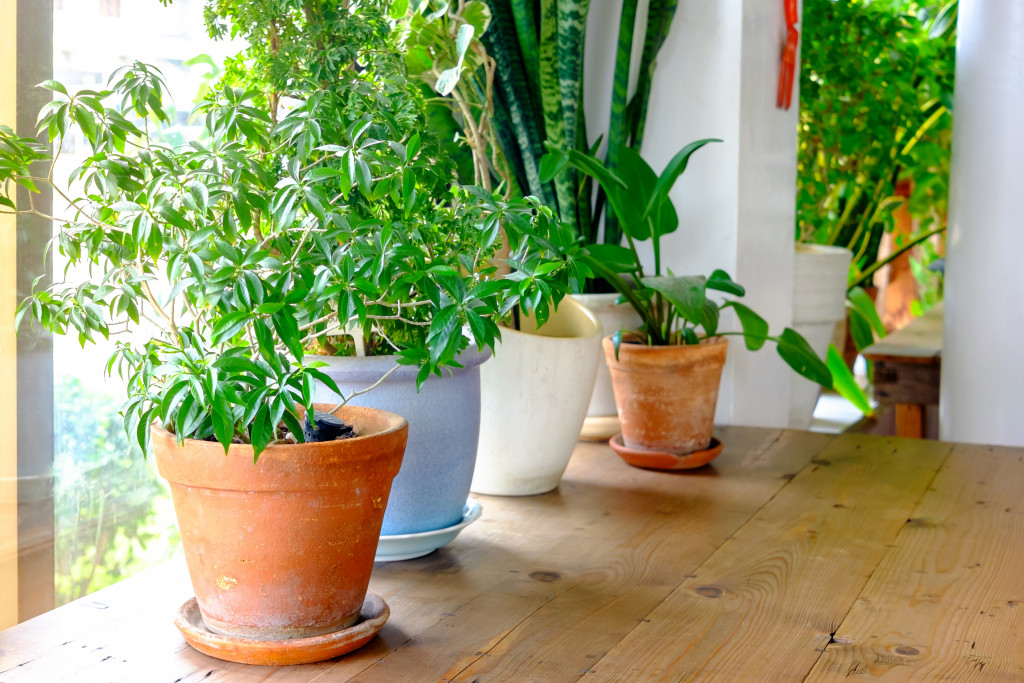If you’re like most people, you probably dream of having a greenhouse to grow your own vegetables and flowers. Not only would that save you money on groceries, but it would also let you enjoy fresh produce all year round. But there are ways to get the most out of your greenhouse by maintaining it properly. Here are some tips on how to do just that.
Clean Your Greenhouse Regularly
Maintaining a greenhouse is essential to keep the plants inside healthy. Ensuring your greenhouse is clean is not only good for your plants but also for you when working in the space because it can help prevent the spread of disease. You should aim to clean your greenhouse at least once a week, although more often is better. One way to do this is to remove any debris or dirt that has built up on the windows, benches, and floor. It’s also important to check for pests and treat them if necessary. Moreover, make sure to keep the greenhouse well-ventilated to prevent any problems with mold or mildew.
However, to thoroughly clean your greenhouse, start by temporarily removing all the plants. Then, sweep out any dirt or debris that has accumulated on the floor. Next, wipe down all the surfaces inside the greenhouse with a diluted vinegar solution or a gentle soap. Finally, rinse the greenhouse with clean water and allow it to air dry before replacing the plants.
In addition to regularly cleaning the main body of your greenhouse, you should also clean any tools or equipment you use inside. This will help prevent the spread of disease and pests from one plant to another. After each use, wipe down your tools with a vinegar solution or soapy water and rinse them with clean water. Allow them to air dry before storing them away.
Control the Temperature
Controlling the temperature in your greenhouse is one of the most important things you can do to ensure success. If it’s too cold, your plants will suffer; if it’s too hot, they will die. To resolve this, you can regulate the temperature inside by using durable polycarbonate roofing systems. This type of material is great for greenhouses because it transmits light well but blocks out the sun’s heat.
Aside from using good building materials, you can also use ventilation and fans to help circulate the air inside and keep the temperature consistent. Make sure to open the vents or windows on hot days so the heat can escape and cool air can come in. Meanwhile, you can close the vents on colder days to trap the heat inside.
Use Natural Light
To reduce the cost of running a greenhouse, many people try to use natural light as much as possible. While this is a great idea in theory, it can be difficult to actually put into practice. Here are a few tips for getting the most out of natural light in your greenhouse:
- Use a light meter to determine how much light is available.
- Place reflective material on the walls and ceilings to bounce light back down into the greenhouse.
- Use shade cloths to protect plants from direct sunlight if needed.
- Consider using grow lights to supplement natural light.
By following these tips, you can ensure that your greenhouse is getting the most out of natural light, which will reduce your energy costs and help your plants to thrive.
Plant Crops That Thrive in Your Climate Zone
If you are looking for plants that will thrive in your climate zone, you should consider planting crops native to your area. Native plants have adapted to the local climate and soil conditions, requiring less care and maintenance. Additionally, they are better equipped to handle pests and diseases that may be present in your region.

Given this, it is important to research the types of crops native to your climate zone before you start planting. Once you have a list of potential crops, you can then start to narrow down your choices based on the specific needs of your greenhouse.
For example, if you live in an area with hot summers and mild winters, you will want to focus on crops that can tolerate the heat. Some heat-tolerant crops include tomatoes, peppers, eggplants, and melons. On the other hand, if you live in an area with cold winters and cool summers, then you will want to focus on crops that can tolerate the cold. Some examples of cold-tolerant crops include cabbage, broccoli, and kale.
Greenhouses can be an excellent way to extend the growing season for plants. You must know how to properly set up and maintain your greenhouse so your plants will stay healthy and thrive.



